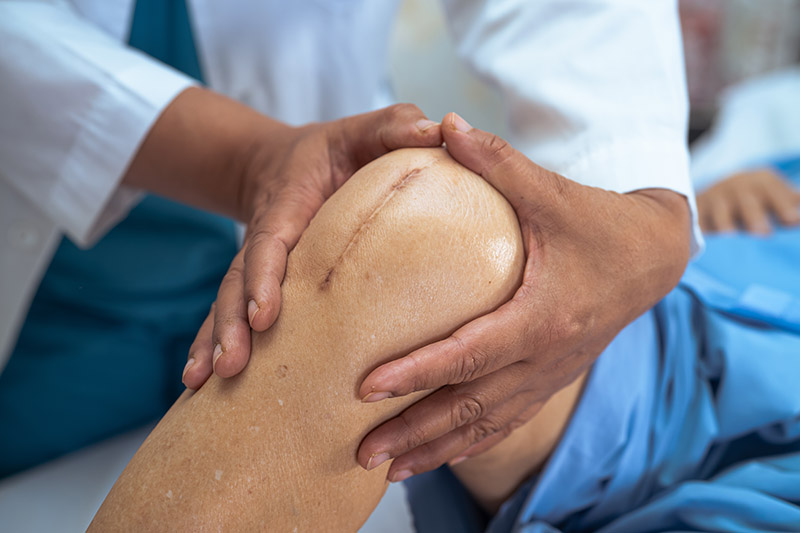
Robotic Arthroplasty
Robotic-arm assisted orthopaedic surgery is used for total and partial knee replacements and total hip replacements.
During joint replacement procedures, Dr Moonda cuts away damaged bone and cartilage and replaces them with artificial components made from high-grade plastic, metal alloys and polymers.
Types of robotic arthroplasty procedures
- Knee replacement. A total knee replacement involves replacing the entire joint. If only one section of the knee is damaged, Dr Moonda will only replace the damaged portion of the knee joint. This is called a partial knee replacement.
- Osteoarthritis. Also known as wear-and-tear arthritis, osteoarthritis damages the slick cartilage that covers the ends of bones and helps joints move smoothly.
- Total hip replacement. Both sections of the joint are removed and replaced.
How robotic arthroscopy works
There are several different types of robotic assistance used for orthopaedic surgery. At Melomed Hospitals, a computerised tomography (CT) scan before the surgery is used to plan precisely how much bone should be removed and to help maximise the accuracy of the placement and alignment of the implant. The robotic arm ensures that the plan is followed exactly — so that just enough, but not too much bone is removed.
Ask Dr Moonda if robotic orthopaedic surgery would be a good option for your situation.
Benefits of robotic surgery
Robot-assisted technology could potentially cut recovery time in half. Smaller incisions combined with greater surgical precision results in less tissue and bone being disturbed, speeding up the body’s natural healing process.
Increased accuracy may result in a more natural feeling after surgery.Since robotic techniques allow for greater precision, surgeons can customise knee replacements to each patient’s anatomy. For some patients, this leads to a more natural feeling result.

